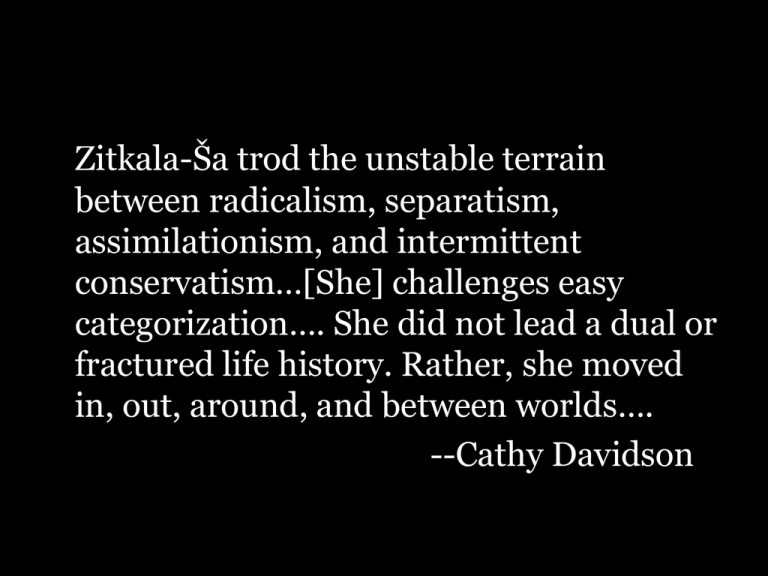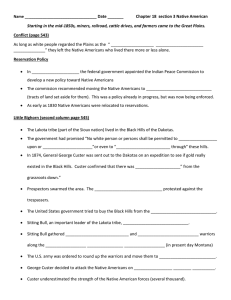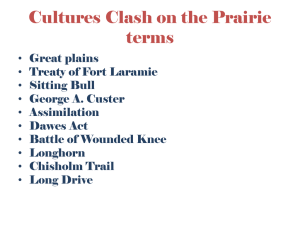zitkala-sa
advertisement

Zitkala-Ša trod the unstable terrain between radicalism, separatism, assimilationism, and intermittent conservatism…[She] challenges easy categorization…. She did not lead a dual or fractured life history. Rather, she moved in, out, around, and between worlds…. --Cathy Davidson Gertrude Käsebier specialized in photographing Native Americans, but was atypical in that she gave them an active role in choosing their dress and representation; these images emphasize her subject’s multiple identities. Chosen by Harper’s Bazaar as one of the “Persons Who Interest Us” in April 1900: the article tracks her “progress toward civilization” from “a veritable little savage running wild over the prairie and speaking no language but her own” to an Indian girl of “beauty and many talents” who writes with “much artistic feeling” Historical Overview • Treaty of Laramie (1868) establishes the “Great Sioux Reservation” along w/ measures for its protection • Battle of Little Big Horn (1876): unsuccessful attempt to take over Sioux land in Montana • Dawes Act (1887) assimilationist polices replaced violent encroachment on land but were intended to eradicate traditional tribal culture • Massacre at Wounded Knee (1890): murder of Sitting Bull and at least three hundred Sioux men, women, and children “Impressions of an Indian Childhood” (1900) “the land of red apples” Zitkala-Ša’s journey from reservation to boarding school reverses geographically the European immigrant’s journey from Europe to New England and the west across America that was happening at the same time. It echoes and yet differentiates itself from the impulse of the world’s diverse (primarily white) populations to assimilate into a heterogeneous—but also homogenized— American culture. –Cathy Davidson “The Red Man’s America” (1917) My country! Tis to thee, Sweet land of Liberty, My pleas I bring. Land where OUR fathers died, Whose offspring are denied The Franchise given wide, Hark, while I sing… What makes Zitkala-Ša such a unique and masterful writer is her ability to portray the perceptions, assumptions, experiences and customs of the Sioux while also making the reader rethink the perceptions, assumptions, experiences, and customs of white, middle-class Americans. --Cathy Davidson











